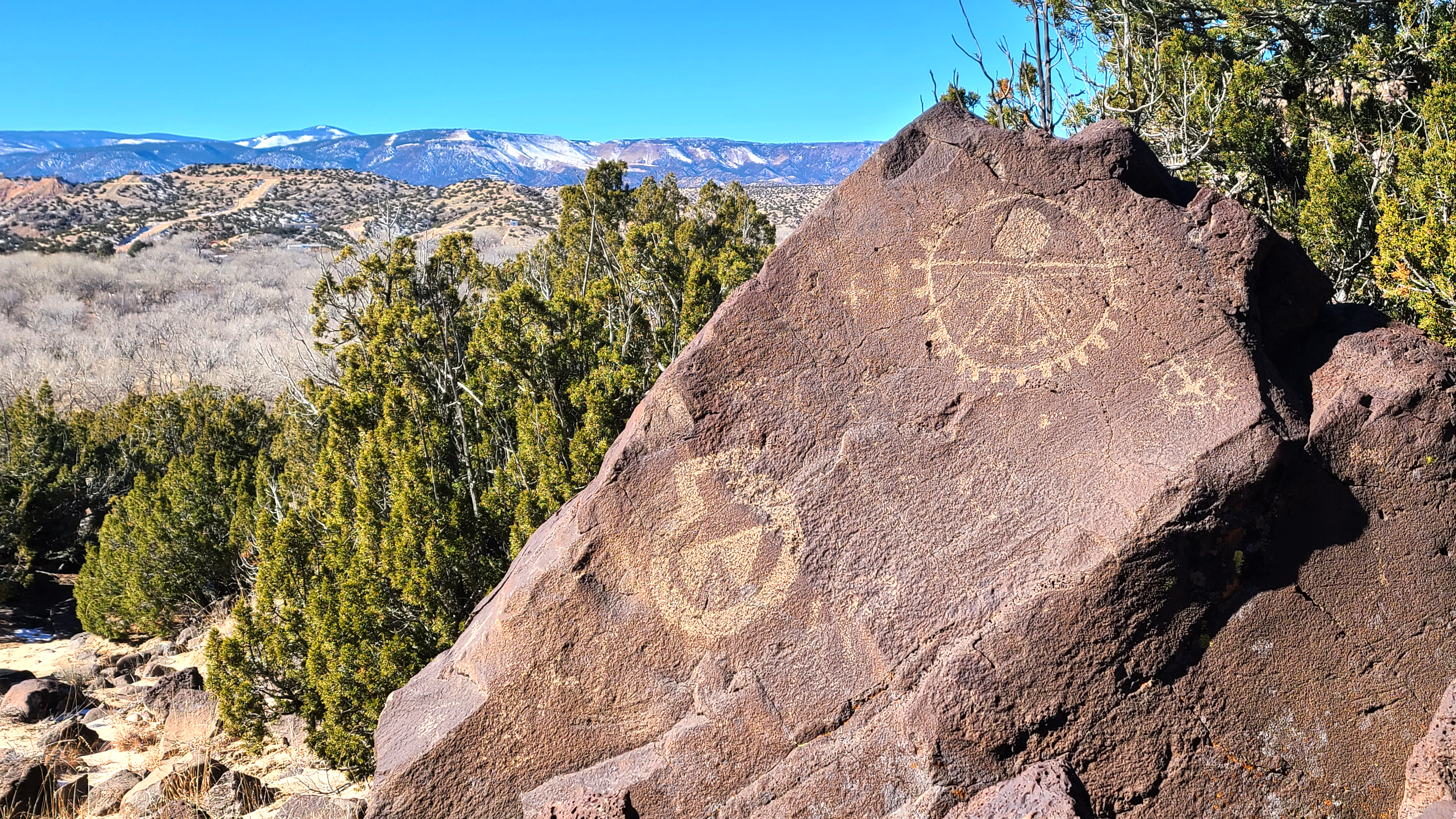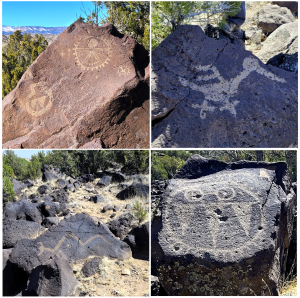With the recent acquisition of the Sagrada Jardín de Piedra (Sacred Rock Garden) Petroglyph Preserve, the Conservancy has successfully expaned protection of Mesa Prieta with another 22 acres of petroglyphs in two 11-acre parcels. This northern New Mexico preserve has stunning views of the Jemez Mountains and Rio Chama, both important landscape features to nearby descendant communities. Hundreds of petroglyphs on the preserve depict wildlife, geometric shapes, and possible celestial events, but the most impressive motifs are decorated shields. While shield images occur across Mesa Prieta, they are more prevalent on this preserve.
The property was previously owned by Arsenio and Doris Martinez, who understood the significance of the petroglyphs and protected them for years. Numerous residential and commercial sites have been constructed on this side of the mesa, while these lots have remained relatively untouched. Arsenio said he had a view of Mesa Prieta from his childhood home, and always wanted to own land there. Eventually, he came to own nearly 100 acres of property on the mesa, including Sagrada Jardín de Piedra, which he named.
Prior to the Conservancy’s acquisition of the two parcels, Arsenio enlisted the help of the Mesa Prieta Petroglyph Project (MPPP) in 2023 to formally document the roughly 350 panels on his property. Many of the panels are concentrated around drainages where seasonal waters flow down from the top of the mesa. These panels include a variety of stylized shield motifs, anthropomorphic figures, horned serpents, and images of local animals, birds, and insects.
Beyond the petroglyphs, the site also contains archaeological features and artifacts that demonstrate activity on this land dating back hundreds of years, such as check dams and terraces that provide evidence of irrigation and agriculture. Pottery fragments and grinding stones suggest that plants were likely transported and processed at the site. Isolated areas of lithic debitage indicate areas where tools were manufactured or reworked. Along one of the drainage areas is a rock shelter and an associated stone alignment. The rock shelter is made up of large naturally occurring boulders that have been fortified with smaller stones, and the stone alignment was created in an area where cleared stones were stacked in a rectangular pattern to create an enclosure. It has been suggested that this could be a historical sheep corral or a pre-contact agricultural terrace, but further research may help determine the function of the interesting site feature.
Residential development in the Mesa Prieta area is on the rise and with it comes the need for upgraded and expanded infrastructure to protect at-risk archaeological features. Large-scale utility projects projected across the mesa throughout 2024 also have the potential to negatively impact the landscape at Mesa Prieta. With the help of the MPPP, the Conservancy will work with local agencies and utility companies to ensure these projects do not impact the irreplaceable resources on this mesa. The goal is to educate these organizations on the finite and fragile nature of the archaeological resources and their significance to the local Ancestral Tewa Pueblo communities, as well as to advocate for professional archaeological monitoring for all future infrastructure projects at Mesa Prieta.
The Sagrada Jardín de Piedra Preserve is an important part of a larger cultural landscape that spans across the mesa and throughout the Rio Chama and Rio Grande valleys. People have visited the basalt boulders at Mesa Prieta for thousands of years, and their ancestors still live, dance, and pray in the valleys below. The preservation of this site will ensure that descendant communities remain connected to their heritage for generations to come.





